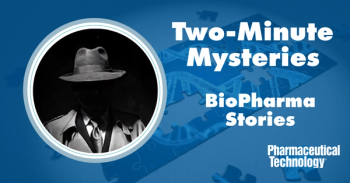
Amgen and Sandoz: Battle Over Neupogen Biosimilar “Shall” Continue
The Federal Circuit heard oral arguments on June 3, 2015 in the ongoing legal battle over the first FDA-approved biosimilar, Zarxio (filgrastim-sndz). Specifically, the court heard arguments on Amgen’s appeal of the District Court for the Northern District of California’s denial of Amgen’s motion for a preliminary injunction seeking to prevent Sandoz from marketing Zarxio until the district court decided the then-pending motions for judgment on the pleadings or until the parties were placed in the position they would have been in had Sandoz complied with the BPCIA provisions. Amgen’s appeal raises two important questions of first impression: (1) Is a biosimilar applicant required to provide a reference product sponsor with a complete copy of its biosimilar applicant and manufacturing information; and (2) Can a biosimilar applicant provide its 180-day notice of intent to commercialize its biosimilar product before it obtains FDA approval?
Amgen has marketed filgrastim under the trade name Neupogen (filgrastim) since 1991. In July 2014, Sandoz filed the first biosimilars application under the Biologics Price Competition and Innovation Act (BPCIA), seeking approval to market its biosimilar version of Neupogen. Despite having participated in the abbreviated regulatory approval process under the BPCIA, Sandoz did not provide Amgen with a complete copy of its biosimilar application as contemplated by the BPCIA’s patent litigation exchange provisions, arguing instead that such provisions were not mandatory. Although unable to access Sandoz’s application and manufacturing information, Amgen filed a declaratory judgment action against Sandoz asserting, among other things, patent infringement of U.S. Patent No. 6,162,427, which claims a method of using granulocyte colony stimulating factor (G-CSF) to treat a disease requiring peripheral stem cell transplantation. Amgen also sought injunctive relief to prevent Sandoz from marketing Zarxio until it complied with the BPCIA patent information exchange procedures.
On March 19, 2015, Judge Seeborg of the Northern District of California denied Amgen’s motion, holding that the BPCIA’s patent procedures were not mandatory and thus Sandoz’s decision not to participate in the disclosure and dispute resolution process was “within its rights.” Amgen immediately sought an injunction in the district court pending its appeal to the Federal Circuit, which the district court denied. Amgen then sought relief at the Federal Circuit, appealing the district court’s denial of a preliminary injunction and also filing an emergency motion for injunctive relief to prevent Sandoz’s launch of Zarxio until the Federal Circuit has an opportunity to address Amgen’s appeal. The Federal Circuit granted Amgen’s motion for emergency relief on May 5, 2015, and requested briefing on the appropriate bond.
The panel consisted of Judges Newman, Lourie, and Chen. During oral argument, Judges Newman and Chen seemed focused on the meaning of “shall” as used in Section 262(l)(2)(A) of the BPCIA, which states that a biosimilars applicant “shall provide to the reference product sponsor a copy of the [biosimilar] application.” Amgen argued that “shall” means “must,” making clear that the information and patent information exchange provisions are mandatory, requiring Sandoz to provide its application to Amgen. Sandoz argued that “shall” means “may,” making the provision elective and giving Sandoz the right to decide whether to participate in the patent exchange provisions. The panel expressed some concern with Sandoz’s interpretation, seemingly hesitant to depart from the ordinary meaning that “shall” means “must.”
The panel also questioned whether interpreting Section 262(l)(2)(A) as optional may give rise to “stealth” biosimilar applicants, preventing the reference sponsor from enforcing its patent rights prior to the launch of the biosimilar product. Indeed, Judges Newman and Chen repeatedly questioned Sandoz’s counsel about how a reference product sponsor would know to file suit under the BPCIA if the notice and information exchanges provisions in the BPCIA were construed as optional. Additionally, Judge Lourie questioned why Congress would spend the time crafting the exchange provisions if it meant for them to be merely elective.
Judge Lourie was particularly interested in the second issue on appeal-whether the 180-day notice of commercial marketing under Section 262(l)(8)(A) can be provided before a biosimilar application is approved and licensed by the FDA. Amgen argued that under this provision, Sandoz was required to give notice of its intent to commercially market its biosimilar product after FDA approval. Although noting that it provided notice under Amgen’s interpretation, Sandoz argued that the statute only requires notice prior to 180 days before marketing, including the date on which applicant filed its biosimilar application. Judge Chen stated that such an argument, however, seemed “nonsensical,” as a biosimilar applicant at the filing stage does not know whether it will obtain approval and therefore would not know when it may commercially market its product, making marketing “aspirational.”
Despite the divergent opinions of counsel, everyone agreed during oral argument that the BPCIA is a complex piece of legislature. Indeed, Judge Lourie jokingly stated, “If the purpose of the statute is to avoid litigation, it has already failed.” Although it remains to be seen how the court will decide the case, we can conclude that the court’s decision will be extremely important for both biosimilar applicants and reference product sponsors, as it is the court’s first opportunity to substantively interpret the BPCIA provisions. The remaining issues in the district court’s case are stayed pending the court’s decision and the temporary injunction granted by the court remains in place until further notice. The parties have briefed the issue of the appropriate bond to be placed pending the injunction, but the court has yet to decide.
About the Authors
Sanya Sukduang is
Newsletter
Stay at the forefront of biopharmaceutical innovation—subscribe to BioPharm International for expert insights on drug development, manufacturing, compliance, and more.





